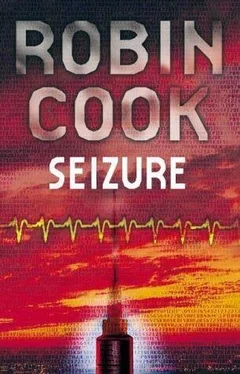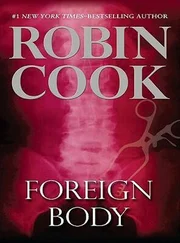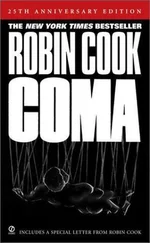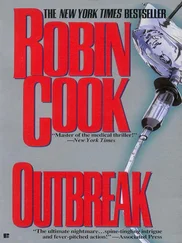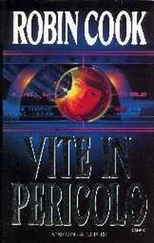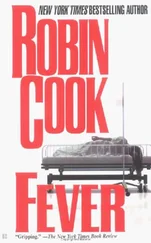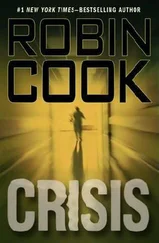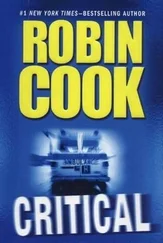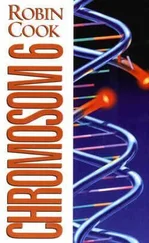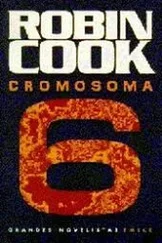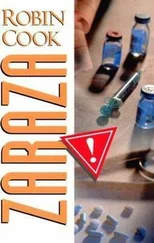“There’s no blood,” Paul said, speaking for the group. “What’s he talking about?”
“John, listen to me!” Dr. Nawaz said. He was still holding up the flap of drape to expose Ashley’s face from the eyebrows down. “Your hands and feet are not bleeding. You are fine. You just have to relax for a few more minutes to allow me to finish.”
“My name is not John,” Ashley said softly. The tears had disappeared as quickly as they had appeared. Although he still sounded inebriated, he seemed suddenly at peace.
“If it is not John, what is it?” Dr. Nawaz asked.
Daniel shot a worried glance at Stephanie, who had taken a step back from the OR table after having helped restrain one of Ashley’s hands. On top of Daniel’s bewilderment, he was now concerned that Ashley was about to reveal his true identity in his drugged state. What that would do to the final outcome of the project he had no idea, but it couldn’t be good, not with all the requisite secrecy so far.
“My name is Jesus,” Ashley said softly, as he beatifically closed his eyes.
Most everyone in the room was again dumbfounded and exchanged bemused glances, but not Dr. Nawaz. His response was to ask Dr. Newhouse what he had given the patient as a sedative before the procedure.
“Intravenous diazepam and fentanyl,” Dr. Newhouse answered.
“Do you feel comfortable giving him another dose immediately?”
“Sure,” Dr. Newhouse said. “Do you want me to?”
“Please,” Dr. Nawaz said.
Dr. Newhouse pulled out the drawer on his anesthesia cart, took out a fresh syringe, and tore open the packaging. With practiced hands, he drew up the medication and injected it into the intravenous port on the IV line.
“Forgive them, Father,” Ashley said without opening his eyes, “for they know not what they do.”
“What’s going on here?” Paul asked in a forced whisper. “Does this guy think he’s Jesus Christ being crucified?”
“Is this some kind of weird drug reaction?” Spencer asked.
“I doubt it,” Dr. Nawaz said. “But whatever its cause, it is certainly a seizure!”
“Seizure?” Paul questioned with incredulity. “This is like no seizure I’ve ever seen.”
“It’s called a complex partial seizure,” Dr. Nawaz said. “Better known as a temporal lobe seizure.”
“What caused it, if not the drugs?” Paul asked. “Sticking the needle into his brain?”
“If it had been the needle, I think it would have occurred earlier,” Dr. Nawaz said. “Since it occurred near the end of the implantation, I think we have to assume it was that.” He looked at Dr. Newhouse. “Check to see if he is asleep?”
Dr. Newhouse reached under the drape and gave Ashley’s shoulder a gentle shake. “Any response?” he asked Dr. Nawaz.
Dr. Nawaz shook his head and lowered the drape over Ashley’s face. He sighed beneath his face mask and turned to look at Daniel. He crossed his still sterile and gloved hands across his gowned chest.
Daniel felt his legs turn rubbery as he looked into the neurosurgeon’s dark, unblinking eyes. Daniel could tell he was troubled, which undermined the composure Daniel had been strenuously maintaining. The fear of a complication, which had been floating in the background of his mind since Ashley’s complaint about a smell, came flooding back with the force of a burst dam.
“I believe you can let go of the patient’s ankles,” Dr. Nawaz said.
Daniel released his grip, which he had been absently maintaining, even after Marjorie had secured the ankle restraints.
“This seizure has me concerned,” Dr. Nawaz said. “Not only do I believe it was not caused by the drugs, the fact that it occurred with the drugs on board suggests it was a particularly violent focal brain disturbance.”
“Why couldn’t it be drug-related?” Daniel asked, with more hope than reason. “Couldn’t it just be like a drug-induced dream? I mean, intravenous diazepam and fentanyl is a potent mix. Combining such a concoction with the suggestively emotive power of the Shroud of Turin is bound to cause wild flights of fancy.”
“What does the Shroud of Turin have to do with this?” Dr. Nawaz asked.
“It has to do with the treatment cells,” Daniel said. “It’s a long story, but prior to the cloning process, a few of the patient’s genes were replaced with genes obtained from the blood on the Shroud of Turin. It was a specific request by the patient, who believes in the shroud’s authenticity. He even said he was hoping for divine intervention.”
“I suppose such ideation could play a role in the patient’s delusion,” Dr. Nawaz said. “But the fact that this was a seizure that occurred with the implantation cannot be denied.”
“But how can you be so sure?” Daniel asked.
“Because of the timing and because of the olfactory hallucination,” Dr. Nawaz said. “The smell he reported was an aura, and a characteristic of a temporal lobe seizure is that it begins with an aura. Other characteristics are hyperreligiosity, profound mood changes, intense libidinal urges, and aggressive behavior, all of which the patient demonstrated in the short time he was awake. It was a classic example.”
“What should we do?” Daniel asked, although he was afraid to hear the answer.
“Pray that it was a one-time phenomenon,” Dr. Nawaz said. “Unfortunately, with the intensity the focus undoubtedly had, I would be surprised if he doesn’t develop full-blown temporal lobe epilepsy.”
“There isn’t anything that can be done prophylactically?” Stephanie asked.
“What I’d like to do but know I can’t is image the treatment cells,” Dr. Nawaz said. “I’d like to see where they went. Maybe then we could do something.”
“What do you mean where they went?” Daniel demanded. “You told me with your experience using the stereotaxic frame for injections, you have never had a problem of not being where you were supposed to be.”
“True, but I have also never had a patient develop a seizure during a procedure like this,” Dr. Nawaz said. “Something is amiss.”
“Are you suggesting the cells might not be in the substantia nigra?” Daniel protested. “If so, I don’t want to hear it.”
“Listen!” Dr. Nawaz shot back. “You’re the one who encouraged me to go ahead with this procedure without the appropriate X-ray capability.”
“Let’s not argue,” Stephanie interjected. “The treatment cells can be imaged.”
All eyes turned to her.
“We incorporated a gene for an insect cell surface receptor in the treatment cells,” Stephanie explained. “We did the same thing with our mouse experiments, specifically for imaging purposes. We have a monoclonal antibody containing a radiopaque heavy metal devised by a contributing radiologist. It’s sterile and ready for use. It just has to be injected into the cerebrospinal fluid in the subarachnoid space. With the mice, it worked perfectly.”
“Where is it?” Dr. Nawaz asked.
“Over in the lab in building one,” Stephanie said. “It is sitting on our desk in our assigned office.”
“Marjorie,” Paul said. “Call over to Megan Finnigan in the lab! Have her get the antibody and bring it over here on the double.”
2:15 P.M., Sunday, March 24, 2002
Dr. Jeffrey Marcus was a local radiologist on the staff at Doctors Hospital on Shirley Street in downtown Nassau. Spencer had made a deal with him that he would cover the Wingate Clinic’s radiological needs on an ad hoc basis until a full-time radiologist could be justified. As soon as it was decided a CAT scan was needed for Ashley, Spencer had a nurse call Jeffrey. Since it was a Saturday afternoon, he was able to come immediately. Dr. Nawaz had been pleased because he was acquainted with Jeffrey from Oxford and knew him to have significant neuroradiological experience.
Читать дальше
